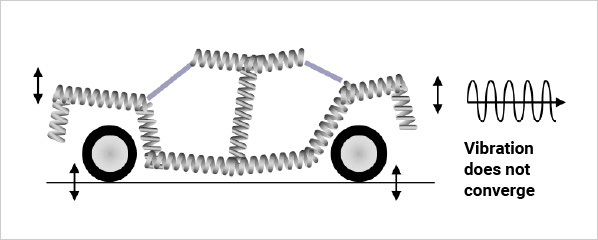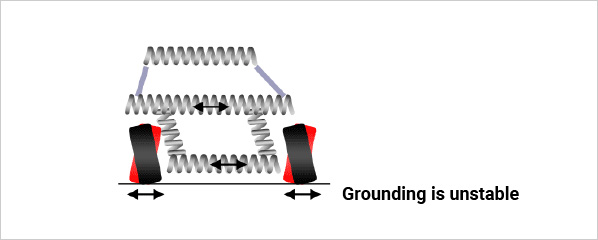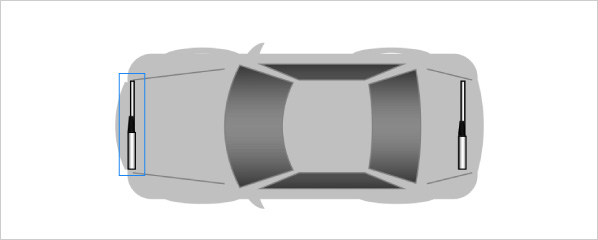Principle of Performance Dampers
The Performance Damper adds a damping element to the chassis, which absorbs distortion energy and dissipates it as heat energy.
The chassis of a passenger vehicle is often slightly distorted by 1 mm or less while driving. A metal body has elastic characteristics and functions poorly to dampen such distortion, so external distortion energy is almost entirely accumulated and released, repeating distortion at a specific frequency.
The Performance Damper adds a damping element to the chassis, which absorbs distortion energy and dissipates it as heat energy. This dampens excessive distortion speed of the chassis, which not only makes for a more comfortable drive, but also enables better handling and stability even when driving at high speed, which typically causes greater chassis distortion.
A car chassis is a collection of spring elements, so a car chassis in motion is constantly being distorted and vibrated.



Performance Dampers add a damping element between two points of the main structure of the chassis, which absorbs distortion and vibrations of chassis.

